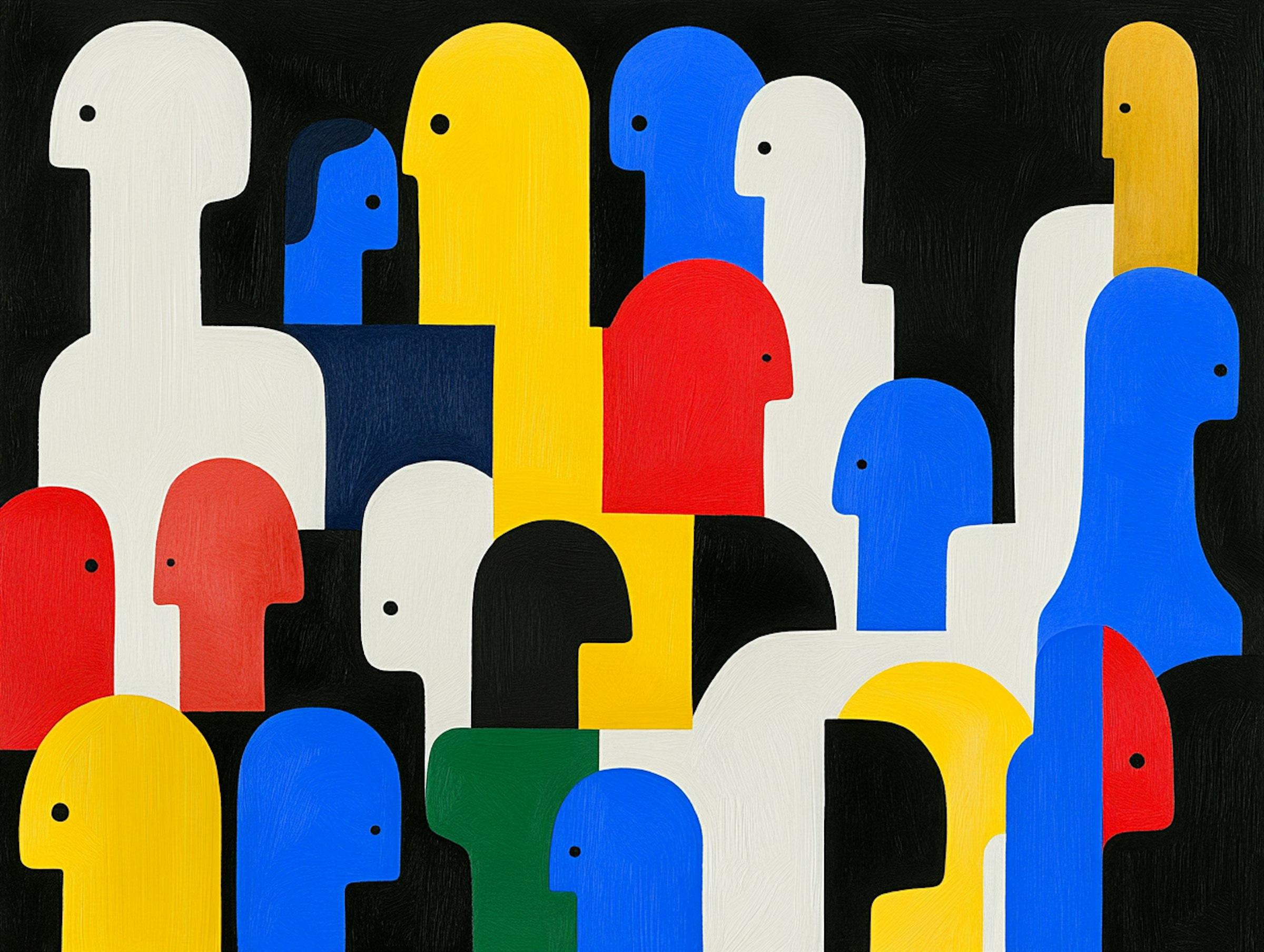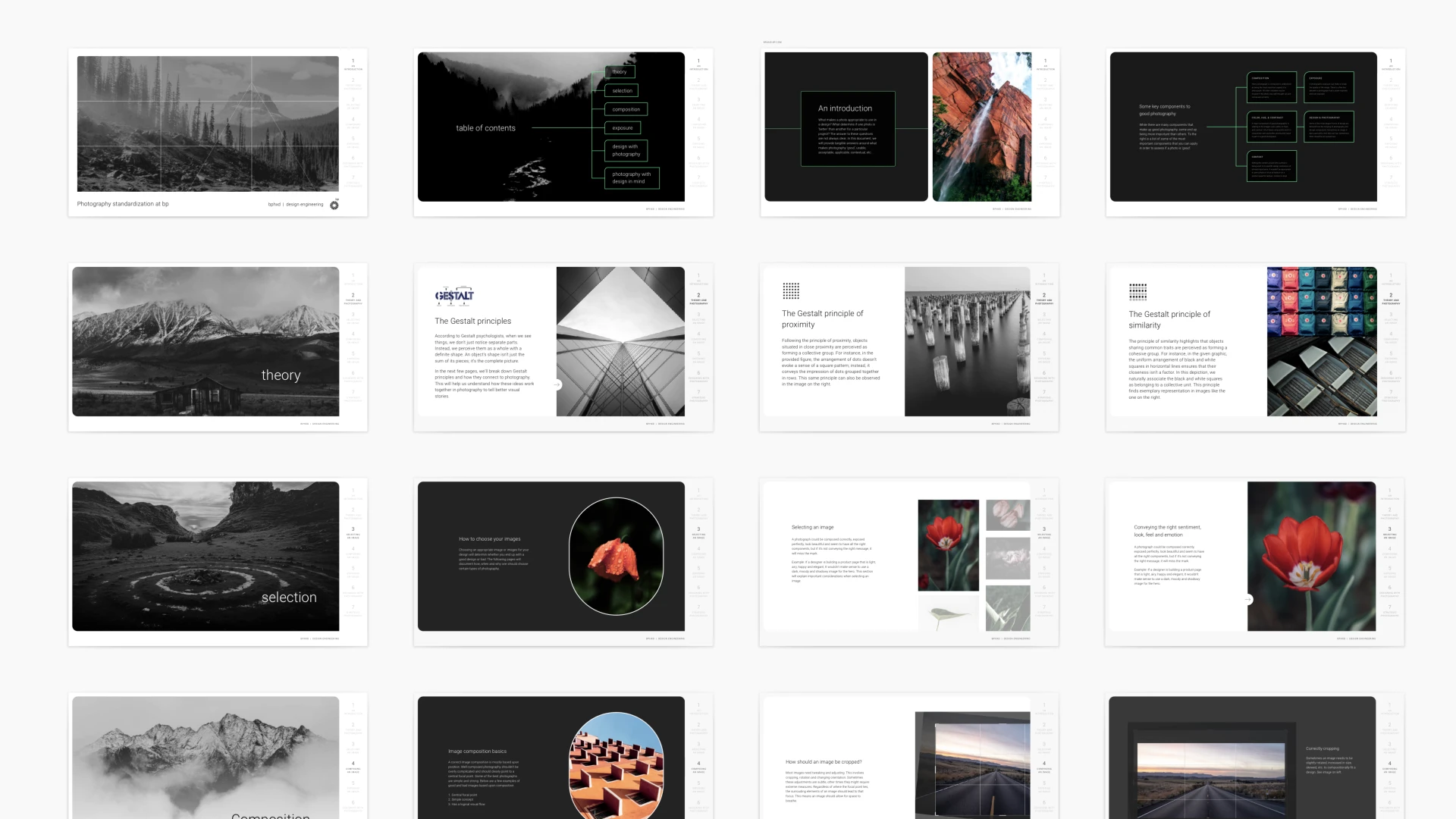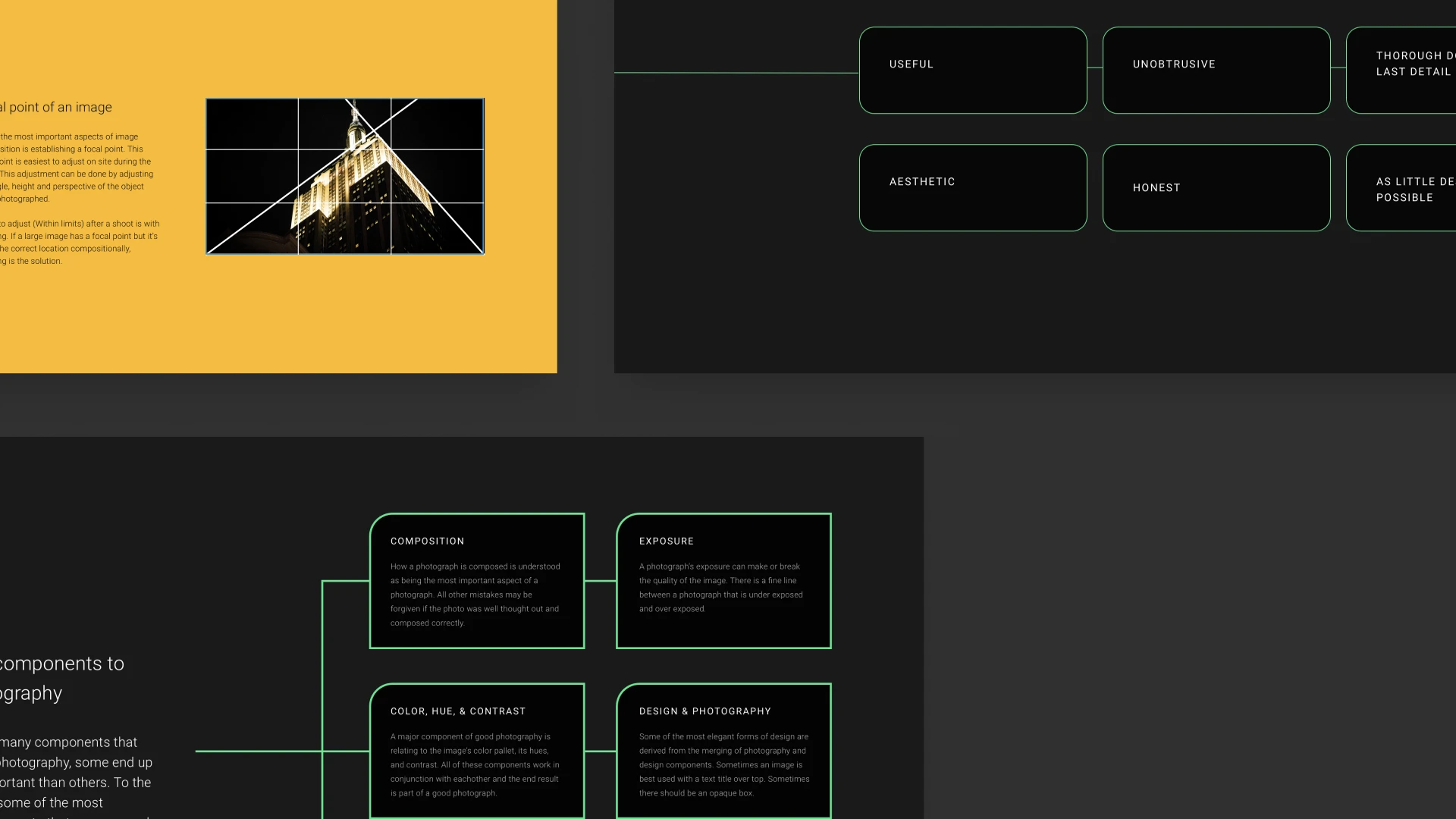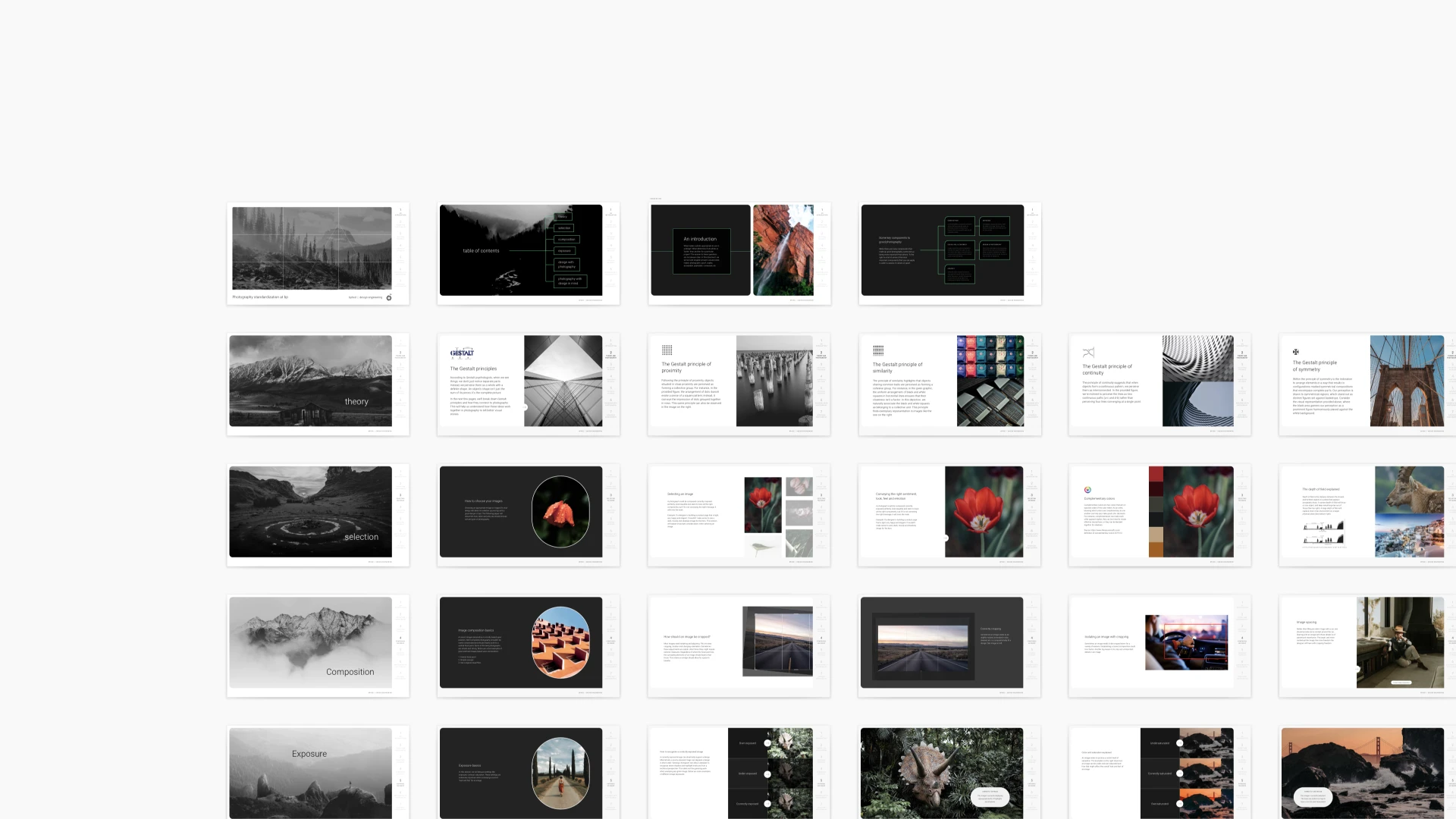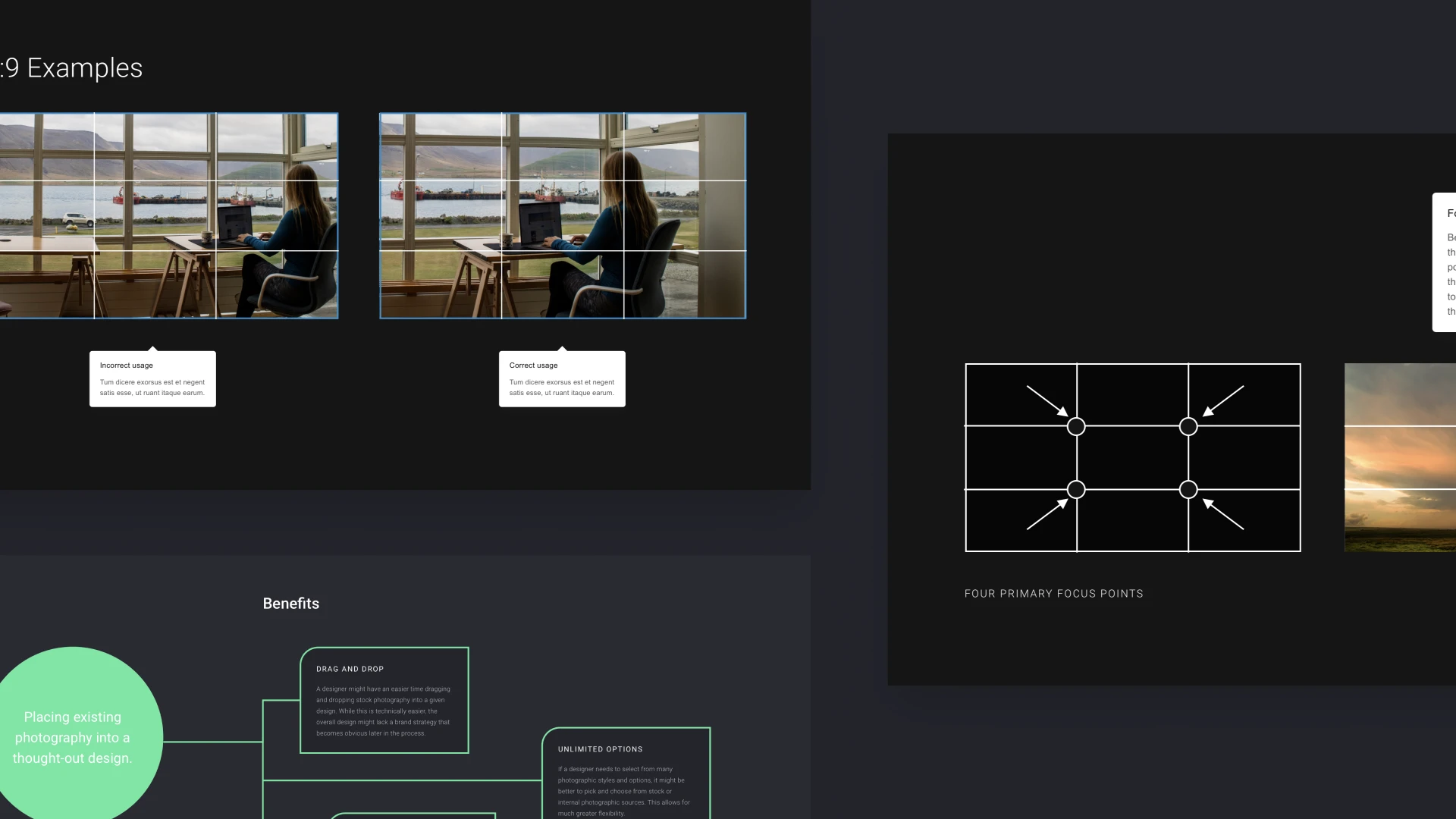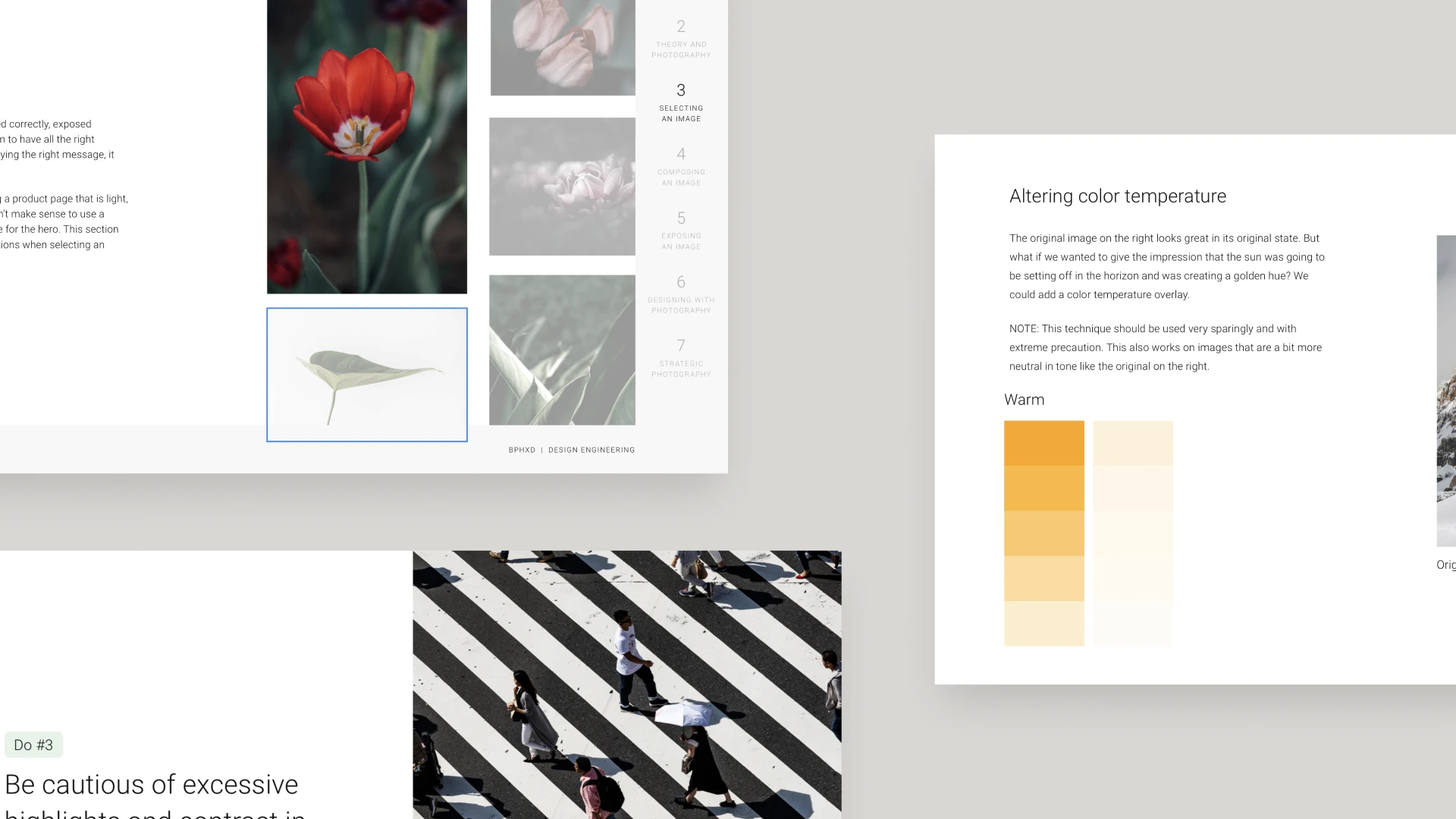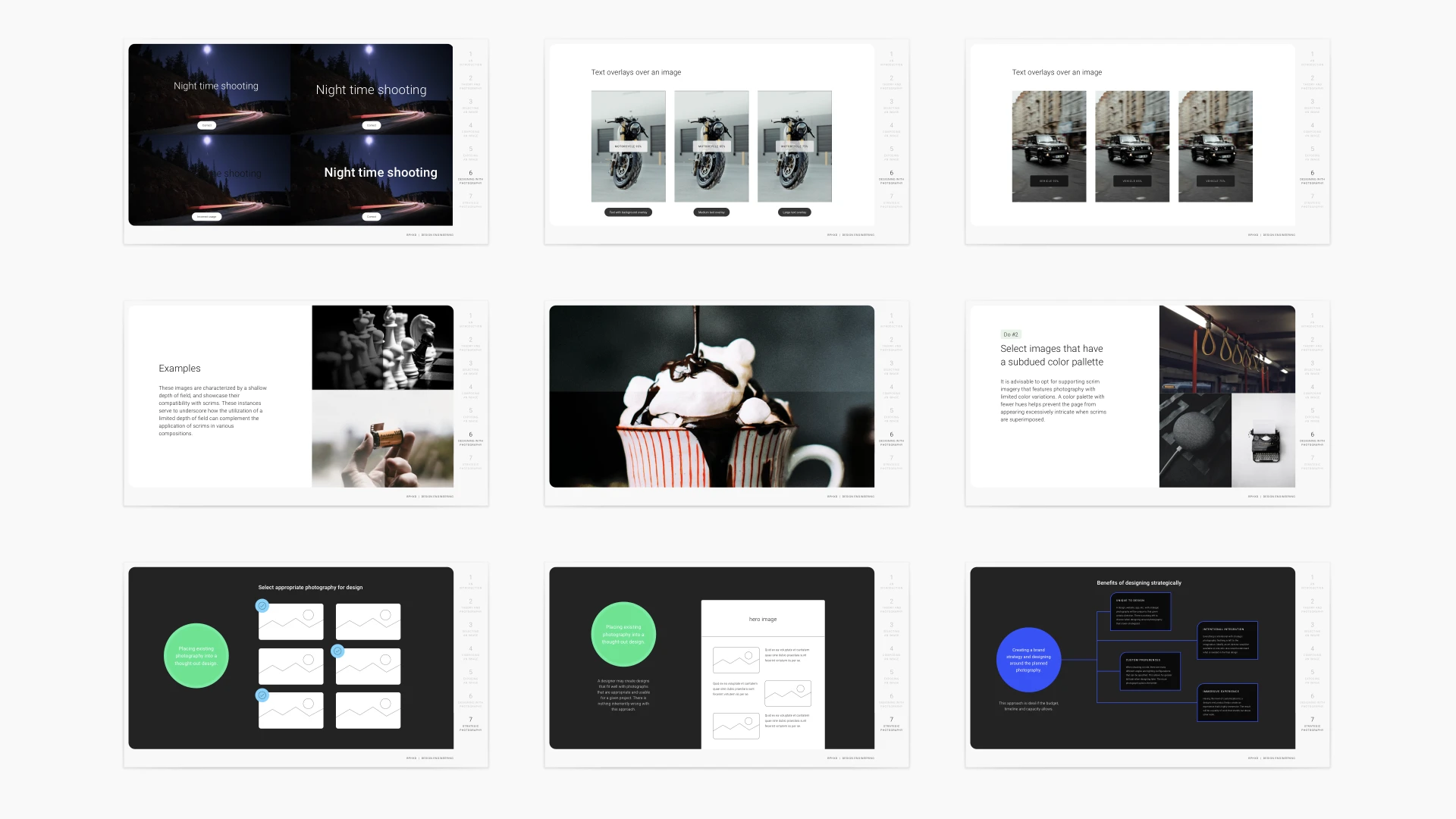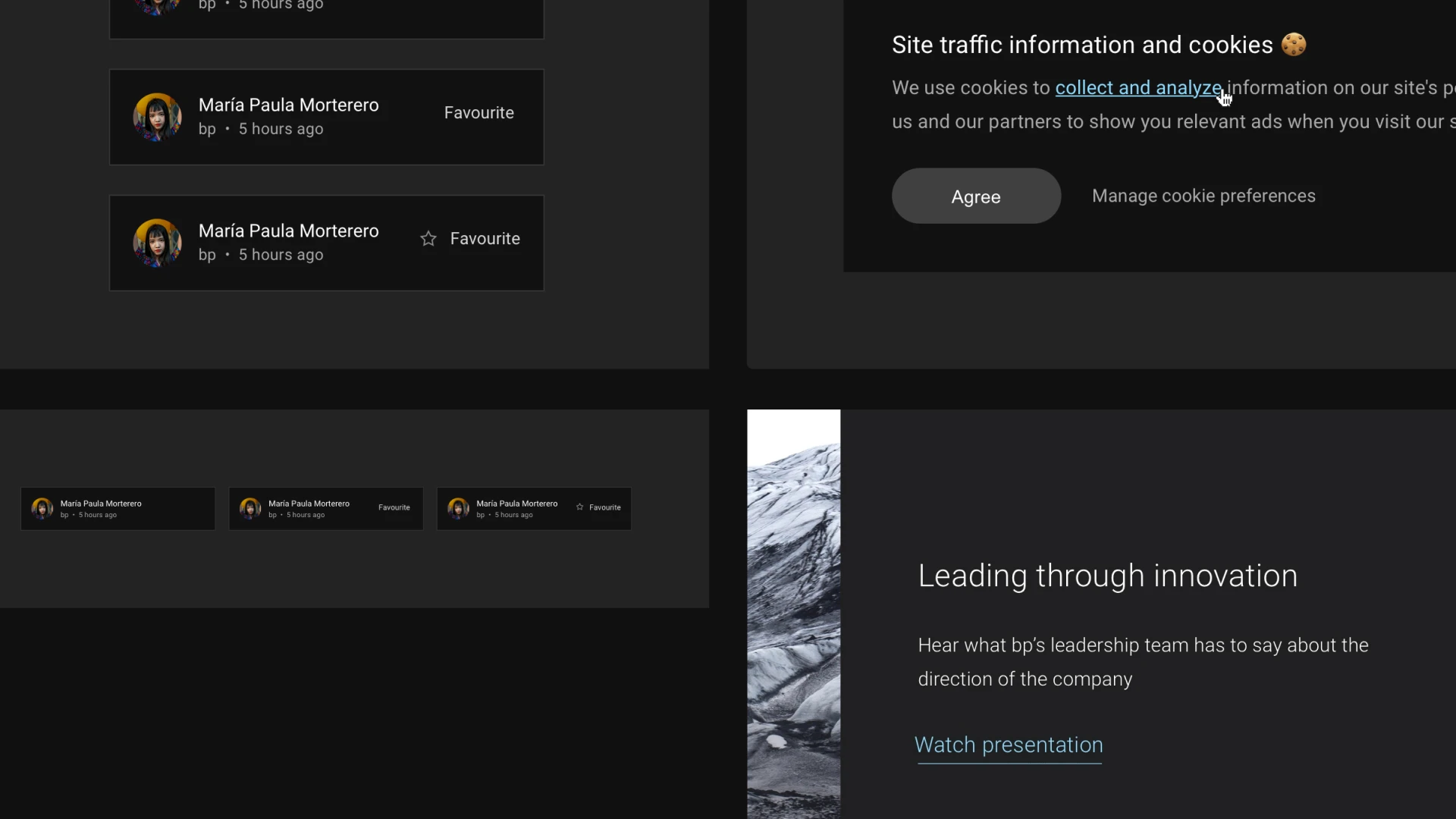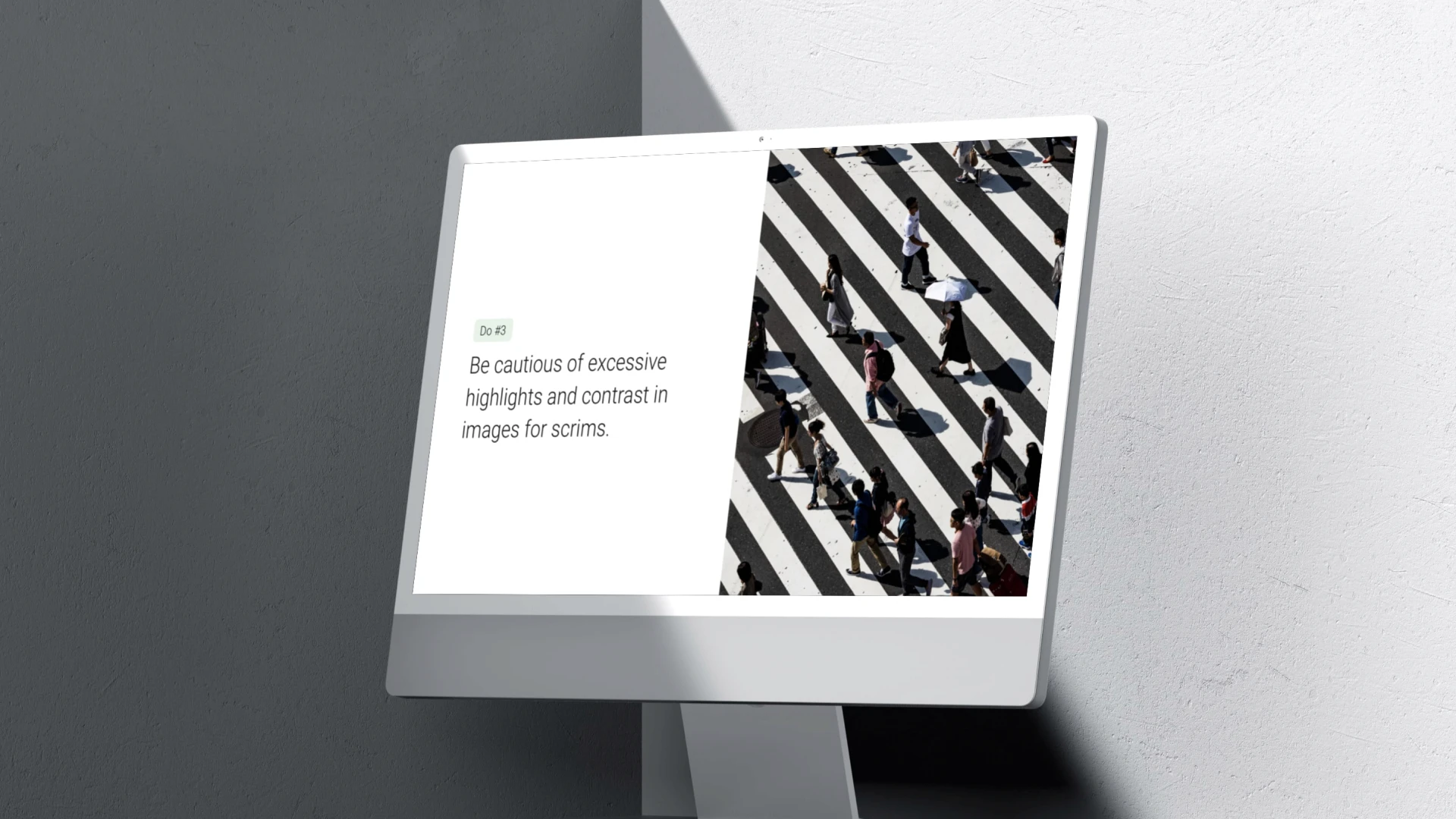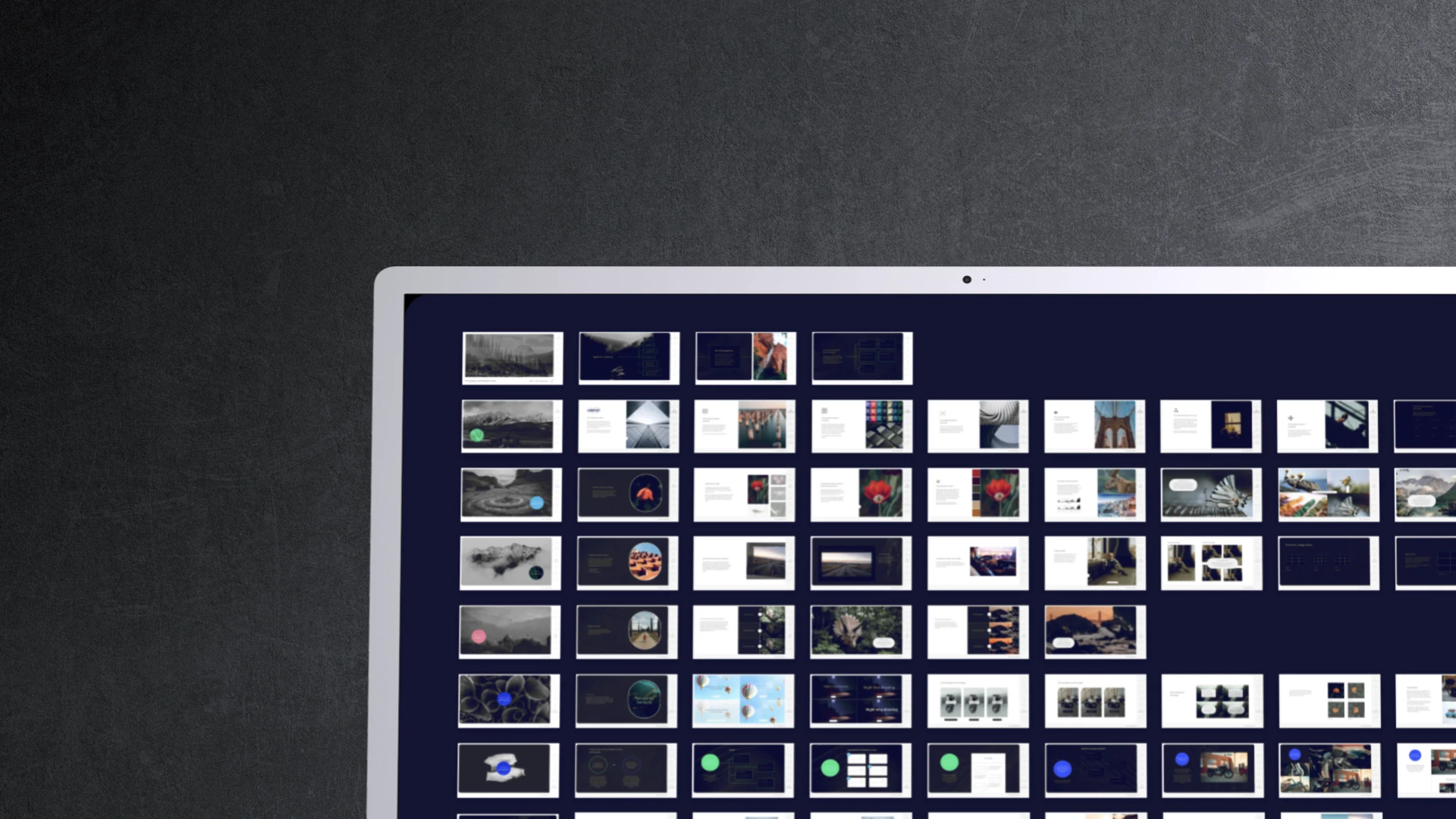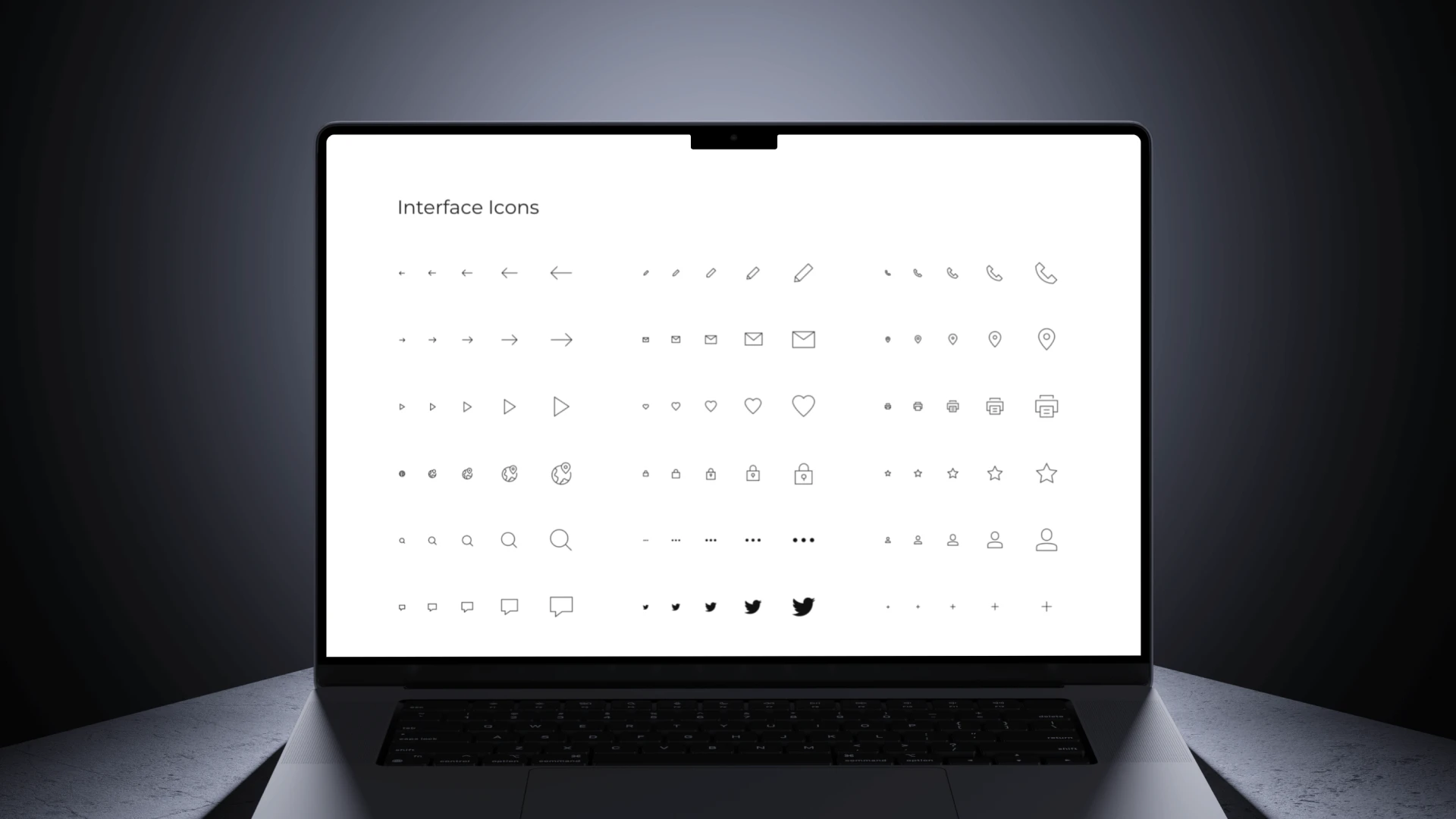bp
bp
bp



Design Engineer
Agency consultant
2020-2023
Design engineering
01
App design
02
Design systems
03
B2C
04
Ux Product Design
05
Overview
BP's design engineering department needed standardized photography & iconography guidelines among other design systems support to enhance consistency.
Objectives
Solutions
Standardized BP's photography guidelines globally.
Feedback
Conducted 25+ workshops and 15+ feedback sessions.
Consistency
Overcame resistance in a 600-designer team.
Engagement
Achieved 30% adoption, with ongoing advocacy efforts.
Research
Created a comprehensive framework for visual assets.


Standardizing visual assets
BP needed a unified approach to photography to standardize visual assets across a team of 600 designers. The challenge was managing resistance to change and navigating complex organizational dynamics while promoting visual coherence and aligning with BP’s brand values.
The primary challenge was implementing comprehensive photography guidelines within BP’s large design engineering department. The initiative aimed to standardize visual assets but faced significant obstacles, including resistance to change and organizational complexity.
With a team of approximately 600 designers, achieving buy-in for new standards required navigating entrenched habits and varying opinions. The project sought to create a unified approach to photography, promoting visual coherence and enhancing the effectiveness of digital communication.
Managing differing perspectives and fostering a cultural shift towards consistency were critical to the success of this standardization effort, which was essential for aligning BP’s visual assets with its brand values.
We were navigating uncharted territory, trying to unify a diverse group under a single visual standard. It wasn’t just about creating guidelines; it was about fostering a cultural shift towards consistency in design.
Standardizing visual assets
BP needed a unified approach to photography to standardize visual assets across a team of 600 designers. The challenge was managing resistance to change and navigating complex organizational dynamics while promoting visual coherence and aligning with BP’s brand values.
The primary challenge was implementing comprehensive photography guidelines within BP’s large design engineering department. The initiative aimed to standardize visual assets but faced significant obstacles, including resistance to change and organizational complexity.
With a team of approximately 600 designers, achieving buy-in for new standards required navigating entrenched habits and varying opinions. The project sought to create a unified approach to photography, promoting visual coherence and enhancing the effectiveness of digital communication.
Managing differing perspectives and fostering a cultural shift towards consistency were critical to the success of this standardization effort, which was essential for aligning BP’s visual assets with its brand values.
We were navigating uncharted territory, trying to unify a diverse group under a single visual standard. It wasn’t just about creating guidelines; it was about fostering a cultural shift towards consistency in design.
Standardizing visual assets
BP needed a unified approach to photography to standardize visual assets across a team of 600 designers. The challenge was managing resistance to change and navigating complex organizational dynamics while promoting visual coherence and aligning with BP’s brand values.
The primary challenge was implementing comprehensive photography guidelines within BP’s large design engineering department. The initiative aimed to standardize visual assets but faced significant obstacles, including resistance to change and organizational complexity.
With a team of approximately 600 designers, achieving buy-in for new standards required navigating entrenched habits and varying opinions. The project sought to create a unified approach to photography, promoting visual coherence and enhancing the effectiveness of digital communication.
Managing differing perspectives and fostering a cultural shift towards consistency were critical to the success of this standardization effort, which was essential for aligning BP’s visual assets with its brand values.
We were navigating uncharted territory, trying to unify a diverse group under a single visual standard. It wasn’t just about creating guidelines; it was about fostering a cultural shift towards consistency in design.
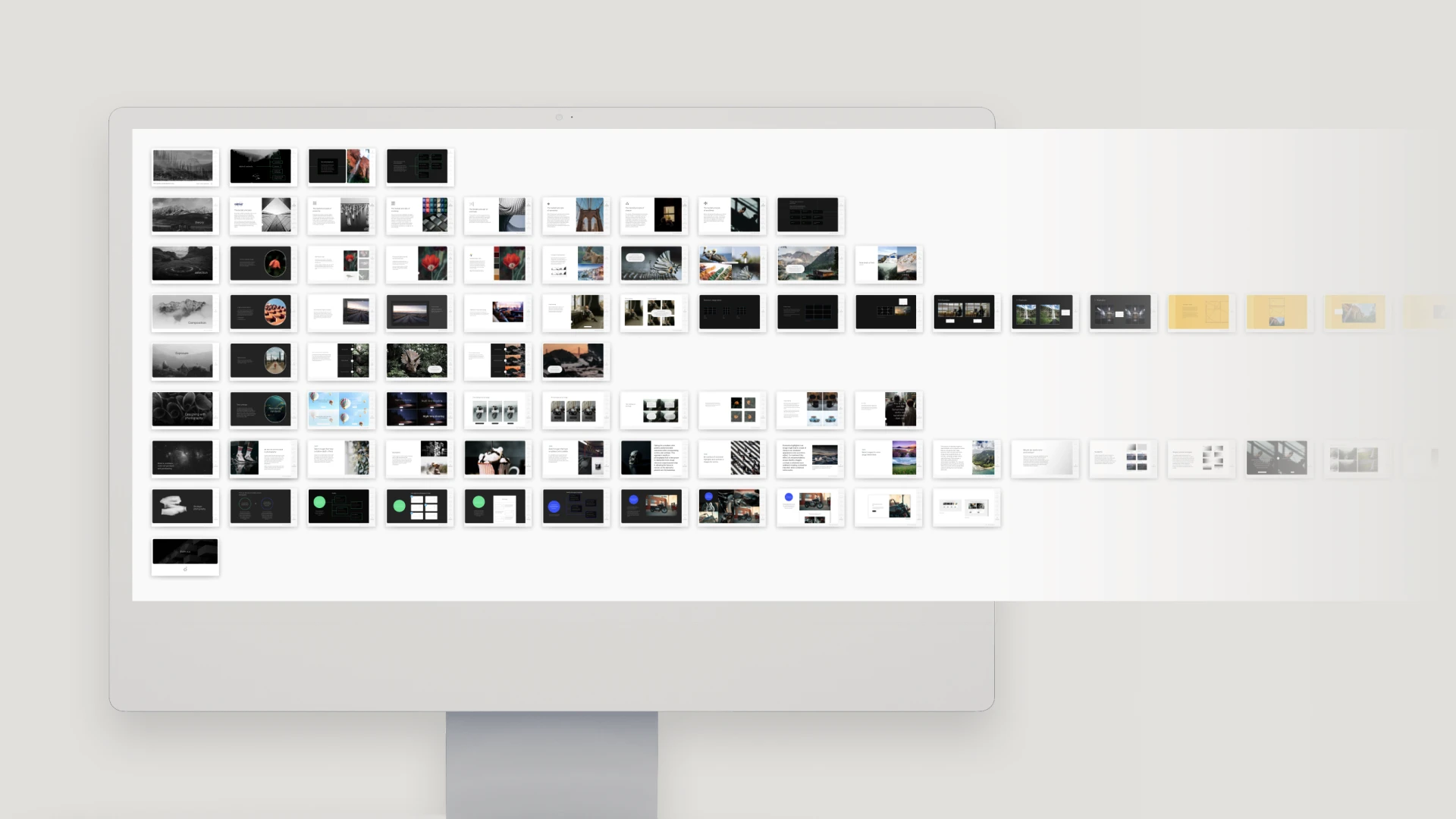

Developing guidelines
The task was to develop and implement a comprehensive set of photography guidelines that would be adopted across BP’s design engineering department. This required research into existing practices, advocacy for change, and educational efforts to ensure alignment with BP’s brand vision.
The main task was to create a structured framework for photography & icons that would be adopted department-wide. This involved extensive research into existing practices and identifying areas needing standardization, including shot selection, cropping, exposure, and composition.
We proposed a comprehensive set of guidelines to improve BP’s visual storytelling. Despite the complexity of organizational dynamics and resistance to change, the task required ongoing advocacy, leadership support, and effective communication to ensure alignment with BP’s brand vision and standards.
Educational efforts were crucial to convey the importance of these guidelines and achieve widespread adoption among designers with varying levels of familiarity.
Creating these guidelines wasn’t just a design task; it was a mission to elevate our visual communication. We needed to convince a diverse team of the value in standardization while respecting individual creativity.
Developing guidelines
The task was to develop and implement a comprehensive set of photography guidelines that would be adopted across BP’s design engineering department. This required research into existing practices, advocacy for change, and educational efforts to ensure alignment with BP’s brand vision.
The main task was to create a structured framework for photography & icons that would be adopted department-wide. This involved extensive research into existing practices and identifying areas needing standardization, including shot selection, cropping, exposure, and composition.
We proposed a comprehensive set of guidelines to improve BP’s visual storytelling. Despite the complexity of organizational dynamics and resistance to change, the task required ongoing advocacy, leadership support, and effective communication to ensure alignment with BP’s brand vision and standards.
Educational efforts were crucial to convey the importance of these guidelines and achieve widespread adoption among designers with varying levels of familiarity.
Creating these guidelines wasn’t just a design task; it was a mission to elevate our visual communication. We needed to convince a diverse team of the value in standardization while respecting individual creativity.
Developing guidelines
The task was to develop and implement a comprehensive set of photography guidelines that would be adopted across BP’s design engineering department. This required research into existing practices, advocacy for change, and educational efforts to ensure alignment with BP’s brand vision.
The main task was to create a structured framework for photography & icons that would be adopted department-wide. This involved extensive research into existing practices and identifying areas needing standardization, including shot selection, cropping, exposure, and composition.
We proposed a comprehensive set of guidelines to improve BP’s visual storytelling. Despite the complexity of organizational dynamics and resistance to change, the task required ongoing advocacy, leadership support, and effective communication to ensure alignment with BP’s brand vision and standards.
Educational efforts were crucial to convey the importance of these guidelines and achieve widespread adoption among designers with varying levels of familiarity.
Creating these guidelines wasn’t just a design task; it was a mission to elevate our visual communication. We needed to convince a diverse team of the value in standardization while respecting individual creativity.


Implementing the framework
We created a structured framework for photography, collaborating closely with leadership and designers. Despite resistance, we implemented the guidelines through ongoing advocacy, workflow improvements, and fostering a cultural shift towards consistency in visual communication.
The development of the photography & icon guidelines resulted in a structured framework designed to elevate design standards and promote visual coherence within BP. Despite challenges in achieving universal adoption, the guidelines provided a clear roadmap for incorporating photography & iconography into the design processes.
The project involved continuous collaboration with leadership and designers to address resistance and align with BP’s brand vision. By streamlining workflows and improving visual communication, the guidelines aimed to enhance the effectiveness of digital assets and support BP’s broader design objectives.
The structured approach and commitment to embedding these standards reflect a dedication to long-term success and design excellence within BP’s operations.
Implementing the guidelines required continuous dialogue and collaboration. It wasn’t just about setting rules but about creating a shared vision that everyone could stand behind.
Implementing the framework
We created a structured framework for photography, collaborating closely with leadership and designers. Despite resistance, we implemented the guidelines through ongoing advocacy, workflow improvements, and fostering a cultural shift towards consistency in visual communication.
The development of the photography & icon guidelines resulted in a structured framework designed to elevate design standards and promote visual coherence within BP. Despite challenges in achieving universal adoption, the guidelines provided a clear roadmap for incorporating photography & iconography into the design processes.
The project involved continuous collaboration with leadership and designers to address resistance and align with BP’s brand vision. By streamlining workflows and improving visual communication, the guidelines aimed to enhance the effectiveness of digital assets and support BP’s broader design objectives.
The structured approach and commitment to embedding these standards reflect a dedication to long-term success and design excellence within BP’s operations.
Implementing the guidelines required continuous dialogue and collaboration. It wasn’t just about setting rules but about creating a shared vision that everyone could stand behind.
Implementing the framework
We created a structured framework for photography, collaborating closely with leadership and designers. Despite resistance, we implemented the guidelines through ongoing advocacy, workflow improvements, and fostering a cultural shift towards consistency in visual communication.
The development of the photography & icon guidelines resulted in a structured framework designed to elevate design standards and promote visual coherence within BP. Despite challenges in achieving universal adoption, the guidelines provided a clear roadmap for incorporating photography & iconography into the design processes.
The project involved continuous collaboration with leadership and designers to address resistance and align with BP’s brand vision. By streamlining workflows and improving visual communication, the guidelines aimed to enhance the effectiveness of digital assets and support BP’s broader design objectives.
The structured approach and commitment to embedding these standards reflect a dedication to long-term success and design excellence within BP’s operations.
Implementing the guidelines required continuous dialogue and collaboration. It wasn’t just about setting rules but about creating a shared vision that everyone could stand behind.
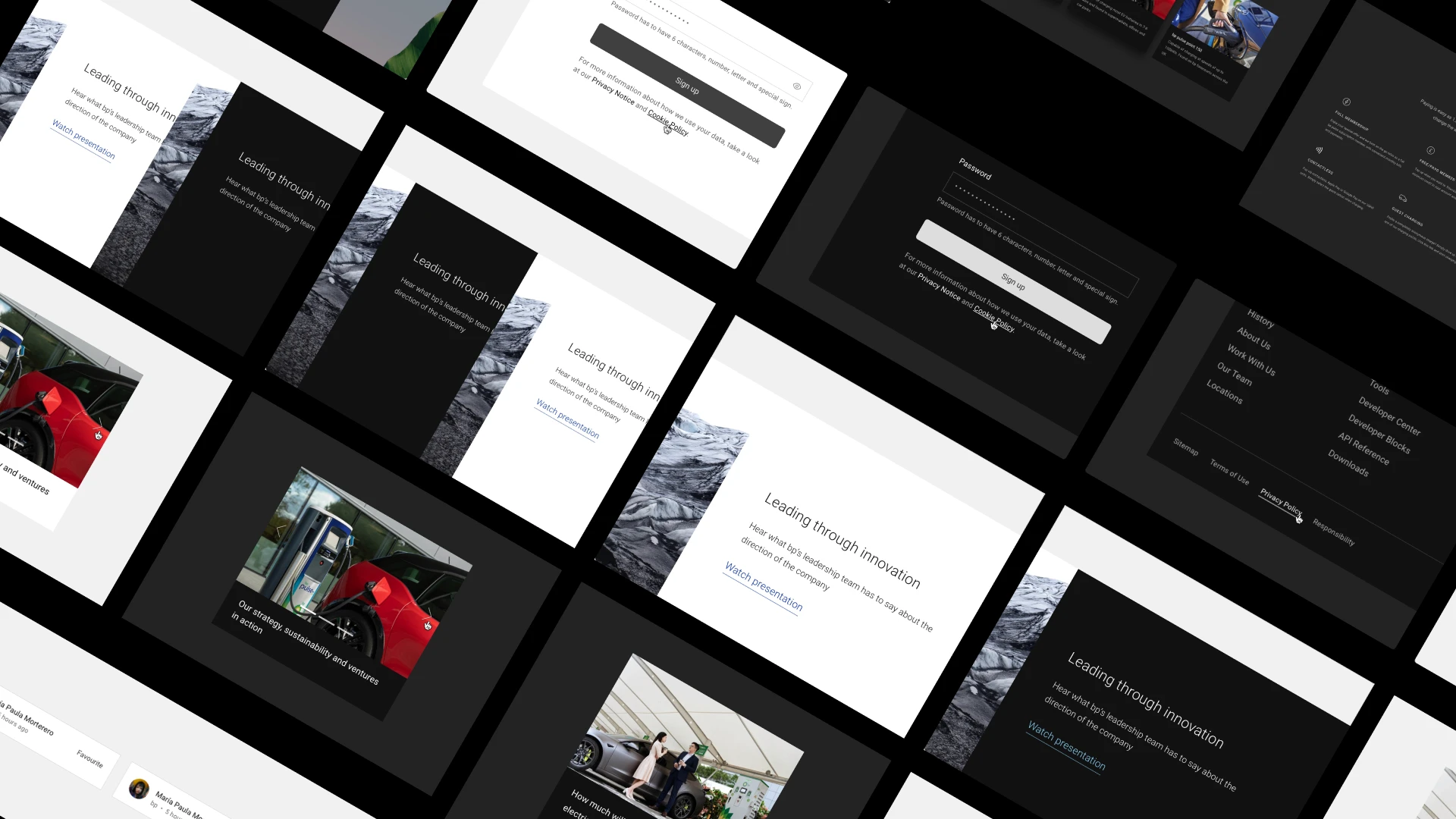

Achievements and ongoing efforts
The guidelines significantly improved visual consistency within BP, although widespread adoption is ongoing. The project highlighted the challenges of standardizing practices in a large organization but made crucial strides in aligning visual assets with BP’s brand identity.
We Tracked the Product Post-Launch
Monitoring the progress of the photography and iconography guidelines project involved tracking key metrics related to adoption, communication, and impact. Despite significant efforts, challenges such as resistance to change and varying stakeholder perspectives persisted.
Metrics were used to gauge the effectiveness of the guidelines, including designer engagement, feedback on usability, and the overall impact on visual coherence and brand consistency. Ongoing efforts to address challenges and refine the approach were essential for achieving the project’s goals.
The journey wasn’t easy, but we made meaningful progress. The guidelines are now a cornerstone of our design process, and while adoption is still growing, we’re on the right path.
Achievements and ongoing efforts
The guidelines significantly improved visual consistency within BP, although widespread adoption is ongoing. The project highlighted the challenges of standardizing practices in a large organization but made crucial strides in aligning visual assets with BP’s brand identity.
We Tracked the Product Post-Launch
Monitoring the progress of the photography and iconography guidelines project involved tracking key metrics related to adoption, communication, and impact. Despite significant efforts, challenges such as resistance to change and varying stakeholder perspectives persisted.
Metrics were used to gauge the effectiveness of the guidelines, including designer engagement, feedback on usability, and the overall impact on visual coherence and brand consistency. Ongoing efforts to address challenges and refine the approach were essential for achieving the project’s goals.
The journey wasn’t easy, but we made meaningful progress. The guidelines are now a cornerstone of our design process, and while adoption is still growing, we’re on the right path.
Achievements and ongoing efforts
The guidelines significantly improved visual consistency within BP, although widespread adoption is ongoing. The project highlighted the challenges of standardizing practices in a large organization but made crucial strides in aligning visual assets with BP’s brand identity.
We Tracked the Product Post-Launch
Monitoring the progress of the photography and iconography guidelines project involved tracking key metrics related to adoption, communication, and impact. Despite significant efforts, challenges such as resistance to change and varying stakeholder perspectives persisted.
Metrics were used to gauge the effectiveness of the guidelines, including designer engagement, feedback on usability, and the overall impact on visual coherence and brand consistency. Ongoing efforts to address challenges and refine the approach were essential for achieving the project’s goals.
The journey wasn’t easy, but we made meaningful progress. The guidelines are now a cornerstone of our design process, and while adoption is still growing, we’re on the right path.
Relevant Statistics
4
Workshops conducted
2
Guidelines drafted
6+
Feedback sessions
TBD
Adoption rate
100+
Resource developed
200+
Icons created
Frequently asked questions
What was your approach to standardizing BP’s photography and iconography?
What was your approach to standardizing BP’s photography and iconography?
What was your approach to standardizing BP’s photography and iconography?
How did you integrate the standardized elements into BP’s design system?
How did you integrate the standardized elements into BP’s design system?
How did you integrate the standardized elements into BP’s design system?
What tools and methodologies did you use for the standardization process?
What tools and methodologies did you use for the standardization process?
What tools and methodologies did you use for the standardization process?
How did you ensure the standardized elements were consistently applied across BP’s global operations?
How did you ensure the standardized elements were consistently applied across BP’s global operations?
How did you ensure the standardized elements were consistently applied across BP’s global operations?
What were the key success metrics for the standardization of BP’s photography and iconography?
What were the key success metrics for the standardization of BP’s photography and iconography?
What were the key success metrics for the standardization of BP’s photography and iconography?
Other
case studies




Building an idea from the ground up
AI Product Design
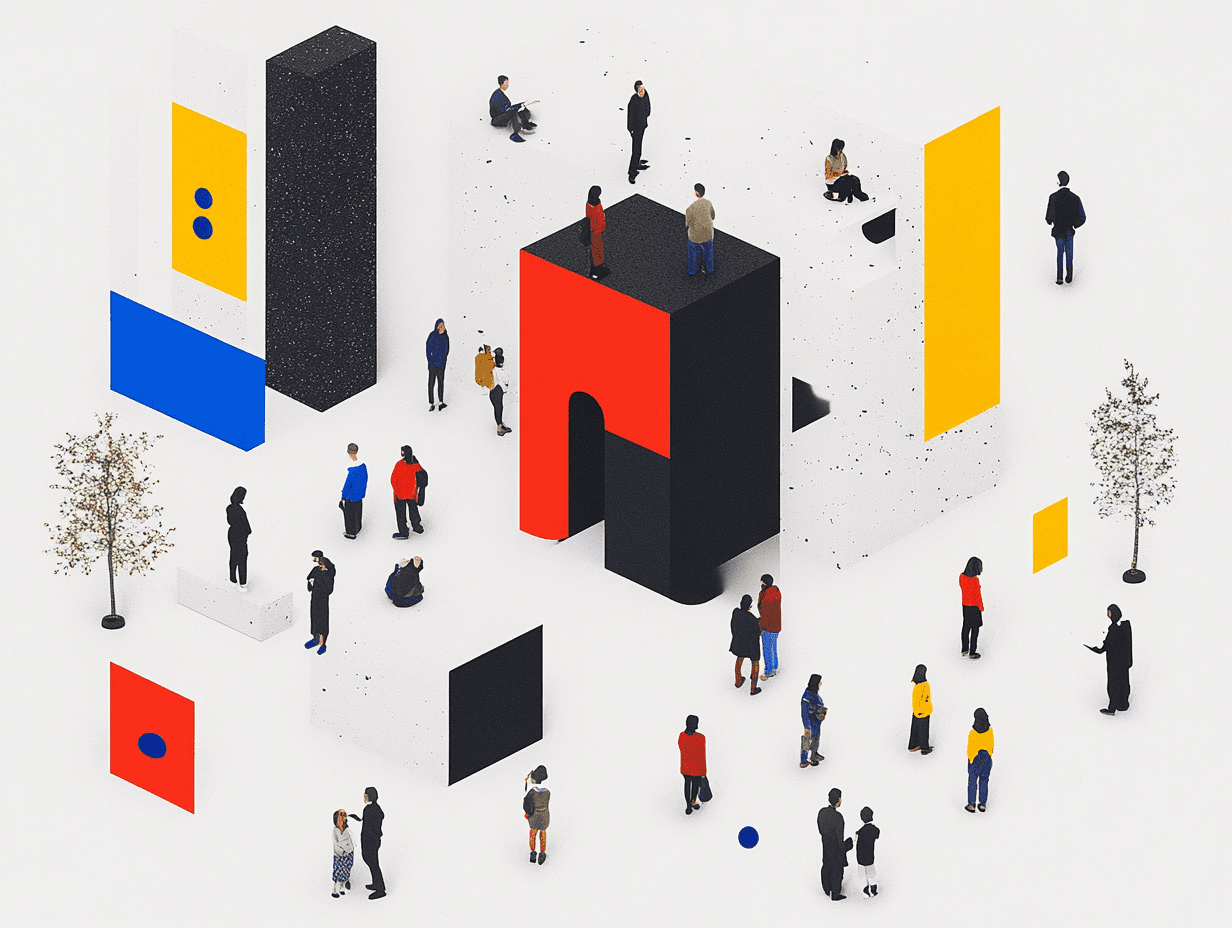



Building consistency with a custom design system
Design System




Linking the right patient to the right healthcare provider
SaaS




Improving global navigation at an enterprise level
Info Architecture


Building an idea from the ground up
AI Product Design


Building consistency with a custom design system
Design System


Linking the right patient to the right healthcare provider
SaaS


Improving global navigation at an enterprise level
Info Architecture
